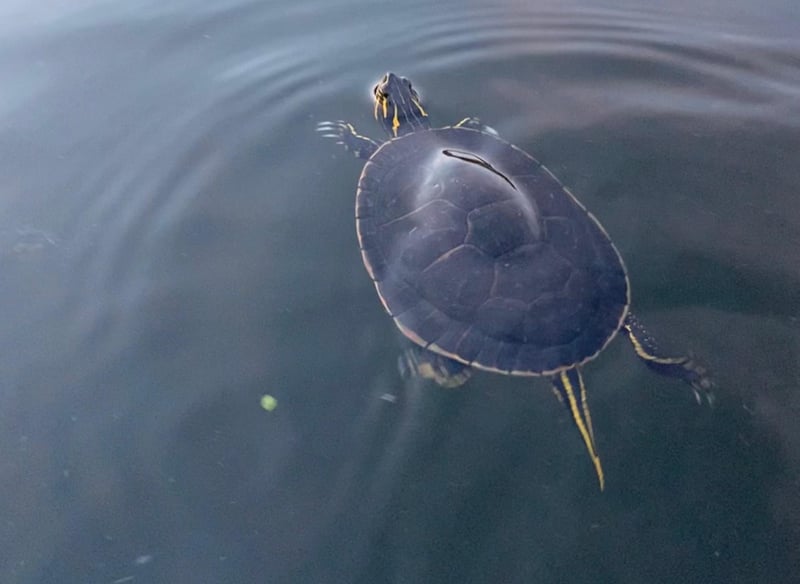Recursos del Paciente
Manténgase sano!
Very Old Reptiles Give Clues to Longevity in Humans
- June 24, 2022
- Cara Murez
- HealthDay Reporter

Historically, not much has been recorded on the aging of amphibians and reptiles, unless they live in a zoo.
Now, a team of international researchers has changed that in a study that traversed the world.
The team of 114 scientists, led by researchers from Penn State and Northeastern Illinois University, conducted the most comprehensive study of aging and longevity in "cold-blooded" animals to date. The investigators collected data in the wild from 107 populations of 77 species of reptiles and amphibians, learning new details about how these creatures age in the process.
"Anecdotal evidence exists that some reptiles and amphibians age slowly and have long lifespans, but until now no one has actually studied this on a large scale across numerous species in the wild," said senior study author David Miller, an associate professor of wildlife population ecology at Penn State, in University Park, Pa.
"If we can understand what allows some animals to age more slowly, we can better understand aging in humans, and we can also inform conservation strategies for reptiles and amphibians, many of which are threatened or endangered," Miller said in a Penn State news release.
The effort paid off: For the first time, researchers documented that turtles, crocodilians and salamanders have particularly slow aging rates and extended lifespans for their size.
And, in at least one species in each group of the cold-blooded animals, including frogs, toads, crocodilians and turtles, the animals did not biologically age at all.
"It sounds dramatic to say that they don't age at all, but basically their likelihood of dying does not change with age once they're past reproduction," said study first author Beth Reinke, an assistant professor of biology at Northeastern Illinois University, in Chicago.
"Negligible aging means that if an animal's chance of dying in a year is 1% at age 10, if it is alive at 100 years, it's chance of dying is still 1%," she explained. "By contrast, in adult females in the U.S., the risk of dying in a year is about 1 in 2,500 at age 10 and 1 in 24 at age 80. When a species exhibits negligible senescence [deterioration], aging just doesn't happen."
The goal of the study was to analyze variations in cold-blooded animals' aging and longevity in the wild compared to the aging of warm-blood animals. The researchers also aimed to explore previous hypotheses related to aging, including body temperature regulation, and presence or absence of protective physical traits.
One past hypothesis suggested that cold-blooded animals age more slowly than warm-blooded ones because of how they regulate their body temperatures and their metabolism.
"People tend to think, for example, that mice age quickly because they have high metabolisms, whereas turtles age slowly because they have low metabolisms," Miller said.
Instead, Miller's team found that cold-blooded animals' aging rates and lifespans were both well above and below the known aging rates for similar-sized warm-blooded animals. This suggests that how an animal regulates its temperature does not determine its aging rate.
"We didn't find support for the idea that a lower metabolic rate means [cold-blooded animals] are aging slower," Miller said. "That relationship was only true for turtles, which suggests that turtles are unique among [cold-blooded animals]."
Another hypothesis, known as the protective phenotypes hypothesis, suggests that animals with protective traits such as armor, spines, shells or venom age more slowly.
The team documented that these traits do seem to enable animals to age more slowly or live much longer for their size.
"It could be that their altered morphology with hard shells provides protection and has contributed to the evolution of their life histories, including negligible aging -- or lack of demographic aging -- and exceptional longevity," said co-senior study author Anne Bronikowski, a professor of integrative biology at Michigan State.
The study findings were published June 23 in the journal Science.
More information
The U.S. National Institute on Aging has more on another aging study, this one in companion dogs.
SOURCE: Penn State, news release, June 23, 2022

